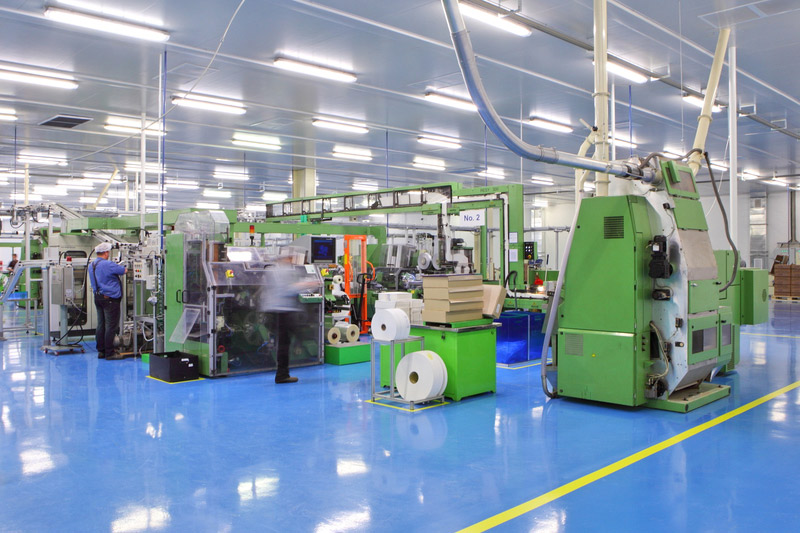The Australian Industry Group Australian Performance of Manufacturing Index (Australian PMI) recovered by a further 1.5 points to 54.0 in February, ending an unseasonably slow summer with its best monthly result since October 2018 (readings above 50 points indicate expansion in activity, with the distance from 50 indicating the strength of the increase).
The Australian PMI has been stable or positive (50 points or higher) since August 2016 (30 consecutive months), but its trend has suggested slowing growth rates since its recent peak in March 2018.
Ai Group Chief Executive Innes Willox said: "Australia's manufacturing sector strengthened in February after faltering in the closing months of 2018 and clawing back some lost ground in January. Production, sales, exports and employment all gained ground. While positive, manufacturing performance is not back at the levels we saw in the first half of 2018 and only three of the six sub-sectors were in clear positive territory in February. The drop off in residential construction activity is flowing along supply chains with both the metal products and the building, wood products & furniture sub-sectors contracting. The important machinery & equipment sub-sector was flat while chemicals and food & beverages which is the largest manufacturing sub-sector maintained healthy levels of growth despite weather-related challenges. New orders were somewhat higher in February pointing tentatively to a continuation of positive momentum over coming months. Looking over the longer term, there are major concerns about the high cost of electricity and gas, particularly in more energy-intensive industries," Mr Willox said.
Australian PMI: Key Findings for February:
- After weak growth in January and two flat months in November and December 2018, the Australian PMI recovered by 2.5 points to 54.0 in February – the best monthly result since October 2018.
- Six of the seven activity indexes in the Australian PMI expanded in February (see table below), with only finished stocks indicating contraction (down 3.2 points to 44.5). New orders (down 0.3 points to 52.0) and deliveries from suppliers (down 2.7 points to 52.9) stayed positive but moderated, while production (up 3.9 points to 57.9) and employment (up 6.6 points to 57.7) strengthened markedly.
- Three of the six manufacturing sectors expanded in February (trend data*) with the largest sector, food & beverages, continuing to perform well (down 0.5 points to 54.7). Machinery & equipment remained flat (down 0.3 points to 50.7) while metal products (down 1.7 points to 46.5) and building materials, wood & furniture (down 2.9 points to 48.0) experienced worsening contractions.
Note: Revised sector classifications and weights apply to the Australian PMI from January 2019. The Australian PMI now includes six sectors instead of our previous eight sectors. - The input prices index rose by 0.7 points to 71.0 in February. It remains relatively elevated as energy-intensive sectors continue to report problems with high gas and electricity prices, but has decelerated since reaching a recent peak of 75.6 points in September 2018. Meanwhile, the selling prices index rose by 1.4 points to 51.4, indicating that prices for some manufactured goods are going up again following price falls in December 2018.
- The average wages index moderated by a further 2.3 points to 59.5 in February. The wages index has been trending lower since its recent peak in September 2018, indicating that fewer manufacturing businesses are now implementing wage rises, relative to Q3 of 2018.
|
Seasonally adjusted |
Index this month |
Change from last month |
12 month average |
Trend |
Index this month |
Change from last month |
12 month average |
|
Australian PMI® |
54.0 |
1.5 |
55.1 |
Food & beverages |
54.7 |
-0.5 |
57.9 |
|
Production |
57.9 |
3.9 |
56.0 |
Machinery & Equipment |
50.7 |
-0.3 |
54.2 |
|
Employment |
57.7 |
6.6 |
53.3 |
Metals products |
46.5 |
-1.7 |
53.0 |
|
New Orders |
52.0 |
-0.3 |
56.0 |
Chemicals |
54.2 |
1.0 |
56.3 |
|
Supplier Deliveries |
52.9 |
-2.7 |
56.4 |
Building, wood, furniture & other |
48.0 |
-2.9 |
56.5 |
|
Finished Stocks |
44.5 |
-3.2 |
51.7 |
TCF, printing & paper products |
51.8 |
-0.5 |
47.6 |
|
Exports |
55.2 |
3.1 |
53.8 |
||||
|
Sales |
54.4 |
2.5 |
54.6 |
||||
|
Input prices |
71.0 |
0.7 |
70.9 |
||||
|
Selling prices |
51.6 |
1.4 |
52.6 |
||||
|
Average wages |
59.5 |
-2.3 |
61.7 |
||||
|
Capacity utilisation (%) |
76.5 |
-1.0 |
77.1 |
Results above 50 points indicate expansion. * All indexes for sectors in the Australian PMI are reported in trend terms (Henderson 13-month filter).
Background: The Australian Industry Group Australian Performance of Manufacturing Index (Australian PMI) is a national composite index calculated from a weighted mix of the diffusion indices for production, new orders, deliveries, inventories and employment. An Australian PMI reading above 50 points indicates that manufacturing activity is expanding; below 50, that it is declining. The distance from 50 indicates the strength of expansion or decline. Australian PMI results are based on responses from a national sample of manufacturers that includes all states and all sub-sectors. The Australian PMI® uses the ANZSIC industry classifications for manufacturing sub-sectors and sub-sector weights derived from ABS industry output data. Seasonally adjusted and trend data are calculated according to ABS methodology. The Australian PMI commenced in 1992. More information about the history and methodology of the Australian PMI® is available online.
